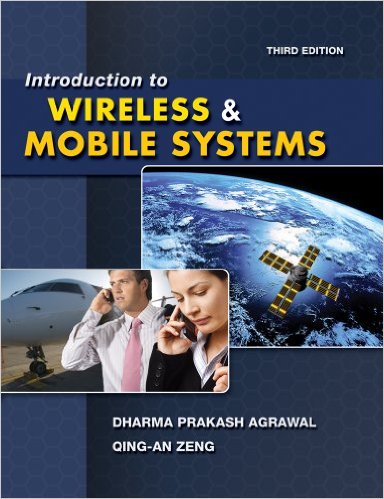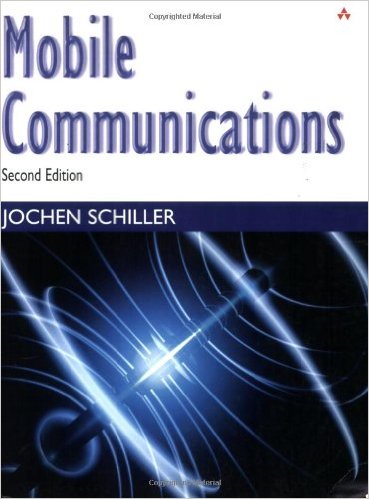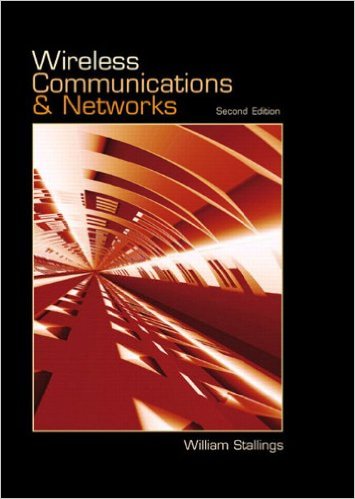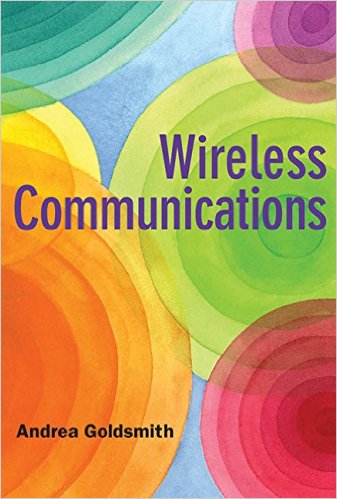Course Objectives
This graduate-level course provides an introduction to wireless and Mobile Computing. The coverage will encompass both theoretical concepts (e.g., Fading, performance analysis, and designing MAC protocols) and practical issues (e.g., 802.11 standards, Mobile IP, and network simulations).
Intended Learning Outcome
Students would obtain a broad knowledge about different existing mobile standards. They also learn about network simulators as well as performance modelling.
Slides
- Introduction to Course: Introduction to Mobile Networking, Course Organization/Contents, Textbooks,
- Introduction to Mobile Networking I: Wireless and Mobile History, Spectrum Allocation, Mobile Devices
- Introduction to Mobile Networking II: New Mobile/Wireless Networks, Mobile Services, Wireless System Development, Research in Mobile Networking
- Fundamentals of Wireless Transmission: Processing at the Transmitter, The Wireless Channel, Processing at the Receiver, Noise, Mobile Radio Propagation, and Throughput Limit for a Wireless Link
- Medium Access Control I: Introduction to Medium Access Control, Wireless MAC: Main Challenges (Hidden, Exposed, Near and Far Terminals), MAC Protocol Taxonomy (SDMA, FDMA, CDMA, TDMA), Frequency Division Multiple Access (Fixed and FHSS), Code Division Multiple Access (CDMA vs DSSS)
- Medium Access Control II: Time Division Multiple Access, Aloha, Carrier Sense Multiple Access (Non-Persistent and Persistent), Demand Assigned Multiple Access, and Multiple Access with Collision Avoidance
- IEEE 802.11: 802.11 History and Standardization, 802.11 Architectures and Layers, 802.11 Frame Format and Addressing, and 802.11 Mac Layer (CSMA/CA)
- IEEE 802.11 MAC Layer: Review CSMA/CA, 802.11 Fragmentation, 802.11 Point Coordination Function, 802.11 MAC Management (Synchronization, Power Control, Roaming), and 802.11e: QoS in WiFi
- IEEE 802.11b PHY Layer I: PHY Layer Characteristics and Data Rates (Area Concept, Layers and Functions, PLCP and PMD Sublayers, Antennas), DSSS in IEEE 802.11b PHY Layer (Barker Codes and Channel Allocation), IEEE 802.11b Packet Format (PLCP Format)
- IEEE 802.11b PHY Layer II: PLCP Transmission/Reception Procedure, Cyclic Redundancy Check (CRC), Scrambler and Descrambler, Clear Channel Assessment (CCA), 802.11b Specifications
- IEEE 802.11b PHY Layer III: IEEE 802.11b with FHSS, IEEE 802.11b with IR, Available Modulations and their Performance (DBPSK, DQPSK, CCK: Complementary Code Keying, and PBCC: Packet Binary Convolutional Code)
- IEEE 802.11a PHY Layer: IEEE 802.11a Transmit and Receive Procedure, 802.11a Modulations (BPSK Performance Analysis), Convolutional Encoder and Viterbi Performance, OFDM in 802.11a ( 802.11a Channels and Timing Parameters, 802.11a PLCP Preamble and Header Format
- More on IEEE 802.11 PHY Layer: IEEE 802.11g, IEEE 802.11n, IEEE 802.11ac, IEEE 802.11p, Physical Data Rates Adaptation
- Netwrok Simulation (ns-2): Introduction to ns-2, ns-2 Components, Create a Basic ns-2 Model, Case Study: WiFi Simulation, Simulation Results Analysis (Traces and NAM)
- WLAN Performance Analysis: Bianchi Model for IEEE 802.11 Perfromance Analysis
- Bluetooth and WiMax: Bluetooth (History and Introduction, IEEE 802.15.1, IEEE 802.15.3, and IEEE 802.15.4), IEEE 802.16: (Worldwide Interoperability for Microwave Access) WiMax
- Routing Protocols in Mobile AD HOC Networks: Topology-based protocols (Proactive: Distance vector based (e.g., DSDV) and Link-state (e.g., OLSR)), Reactive (on-demand: Distance vector based (e.g., AODV), Source routing (e.g., DSR), Position-based protocols, greedy forwarding (e.g., GPSR, GOAFR), restricted directional flooding (e.g., DREAM, LAR), Hybrid approaches
- Mobile Network Layer: Mobile Network Layer: Problems and Concerns, Entities and Terminology in Mobile IP, Mobile Indirect Routing, Mobile IP(Agent Advertisement, Registration, Tunneling and Encapsulation, Optimization: Direct Routing and Handoff, Reverse Tunneling, IPv6)
- Mobile Transport Layer: Traditional TCP: A Brief Review, TCP over Wireless: Challenges, TCP over Wireless: Solutions (Indirect TCP, Snooping TCP, Mobile TCP, Fast Retransmit/Fast Recovery, Transmission/Time-out Freezing, Selective Retransmission, Transaction-Oriented TCP), TCP over 2.5/3G Wireless Networks
- Cellular Architecture and Concepts: Main Architecture (Cellular Network Architecture, History of Cellular Networks (1st, 2nd, 3rd and 4th Generation), Operation of Cellular Systems), Cellular Network Organization (Hexagonal Patterns, Frequency Reuse and Capacity), Mobility Management (Handoff Strategies), Traffic Engineering
- Global System for Mobile Communications(GSM): GSM Architecture, Frequency Band and Channels, Frames in GSM, Interfaces, Planes, and Layers of GSM, Handoff, Short Message Service (SMS)
Books
Introduction to Wireless and Mobile Systems 3rd Edition, by Dharma P. Agrawal and Qing-An Zeng
 This text explains the general principles of how wireless systems work, how mobility is supported, what the underlying
infrastructure is and what interactions are needed among different functional components. Designed as
a textbook appropriate for undergraduate or graduate courses in Computer Science (CS), Computer Engineering (CE),
and Electrical Engineering (EE), Introduction to Wireless and Mobile Systems third edition focuses on qualitative
descriptions and the realistic explanations of relationships between wireless systems and performance.
This text explains the general principles of how wireless systems work, how mobility is supported, what the underlying
infrastructure is and what interactions are needed among different functional components. Designed as
a textbook appropriate for undergraduate or graduate courses in Computer Science (CS), Computer Engineering (CE),
and Electrical Engineering (EE), Introduction to Wireless and Mobile Systems third edition focuses on qualitative
descriptions and the realistic explanations of relationships between wireless systems and performance.
Mobile Communications, by Jochen Schiller
 The mobile communications market remains the fastest growing segment of the global computing and communications business. The rapid progress
and convergence of the field has created a need for new techniques and solutions, knowledgeable professionals to create and implement them,
and courses to teach the background theory and technologies while pointing the way towards future trends.
In this book Jochen Schiller draws on his extensive experience to provide a thorough grounding in mobile communications,
describing the state of the art in industry and research while giving a detailed technical background to the area.
The book covers all the important aspects of mobile and wireless communications from the Internet to signals, access protocols and
cellular systems, emphasizing the key area of digital data transfer. It uses a wide range of examples and other teaching aids, making
it suitable for self-study and university classes.
The mobile communications market remains the fastest growing segment of the global computing and communications business. The rapid progress
and convergence of the field has created a need for new techniques and solutions, knowledgeable professionals to create and implement them,
and courses to teach the background theory and technologies while pointing the way towards future trends.
In this book Jochen Schiller draws on his extensive experience to provide a thorough grounding in mobile communications,
describing the state of the art in industry and research while giving a detailed technical background to the area.
The book covers all the important aspects of mobile and wireless communications from the Internet to signals, access protocols and
cellular systems, emphasizing the key area of digital data transfer. It uses a wide range of examples and other teaching aids, making
it suitable for self-study and university classes.
Wireless Communications & Networks, by William Stallings
 Wireless Communications and Networks, 2e, provides one of the most up-to-date and accurate overviews of wireless principles, technology, and application.
It is ideal for courses in wireless networking, wireless communications, wireless data communications or wireless technology in departments of
Computer Science, Engineering, IT, and Continuing Education.
The rapid growth of mobile telephone use, satellite services, and the wireless Internet are generating tremendous changes in telecommunications and networking.
Combining very current technical depth with a strong pedagogy and advanced Web support, this new edition provides a comprehensive guide to wireless
technology—exploring key topics such as technology and architecture, network types, design approaches, and the latest applications.
Wireless Communications and Networks, 2e, provides one of the most up-to-date and accurate overviews of wireless principles, technology, and application.
It is ideal for courses in wireless networking, wireless communications, wireless data communications or wireless technology in departments of
Computer Science, Engineering, IT, and Continuing Education.
The rapid growth of mobile telephone use, satellite services, and the wireless Internet are generating tremendous changes in telecommunications and networking.
Combining very current technical depth with a strong pedagogy and advanced Web support, this new edition provides a comprehensive guide to wireless
technology—exploring key topics such as technology and architecture, network types, design approaches, and the latest applications.
Wireless Communications, by Andrea Goldsmith
 Wireless technology is a truly revolutionary paradigm shift, enabling multimedia communications between people and devices from any location.
It also underpins exciting applications such as sensor networks, smart homes, telemedicine, and automated highways.
This book provides a comprehensive introduction to the underlying theory, design techniques and analytical tools of wireless communications,
focusing primarily on the core principles of wireless system design. The book begins with an overview of wireless systems and standards.
The characteristics of the wireless channel are then described, including their fundamental capacity limits. Various modulation, coding,
and signal processing schemes are then discussed in detail, including state-of-the-art adaptive modulation, multicarrier, spread spectrum,
and multiple antenna techniques. The concluding chapters deal with multiuser communications, cellular system design, and ad-hoc network design.
Design insights and tradeoffs are emphasized throughout the book. It contains many worked examples, over 200 figures, almost 300 homework exercises,
over 700 references, and is an ideal textbook for students. The book is also a valuable reference for engineers in the wireless industry.
Wireless technology is a truly revolutionary paradigm shift, enabling multimedia communications between people and devices from any location.
It also underpins exciting applications such as sensor networks, smart homes, telemedicine, and automated highways.
This book provides a comprehensive introduction to the underlying theory, design techniques and analytical tools of wireless communications,
focusing primarily on the core principles of wireless system design. The book begins with an overview of wireless systems and standards.
The characteristics of the wireless channel are then described, including their fundamental capacity limits. Various modulation, coding,
and signal processing schemes are then discussed in detail, including state-of-the-art adaptive modulation, multicarrier, spread spectrum,
and multiple antenna techniques. The concluding chapters deal with multiuser communications, cellular system design, and ad-hoc network design.
Design insights and tradeoffs are emphasized throughout the book. It contains many worked examples, over 200 figures, almost 300 homework exercises,
over 700 references, and is an ideal textbook for students. The book is also a valuable reference for engineers in the wireless industry.
Journal and Conferences
- Conferences
- MobiCom (International Conference on Mobile Computing and Networking)
- MobiSys (International Conference on Mobile Systems, Applications, and Services)
- MobiHoc (International Symposium on Mobile Ad Hoc Networking and Computing)
- Infocom (IEEE conference on International Conference on Computer Communications)
- Journals
- IEEE Transactions on Mobile Computing
- IEEE Transactions on Wireless Communications
- IEEE Transactions on Communications
